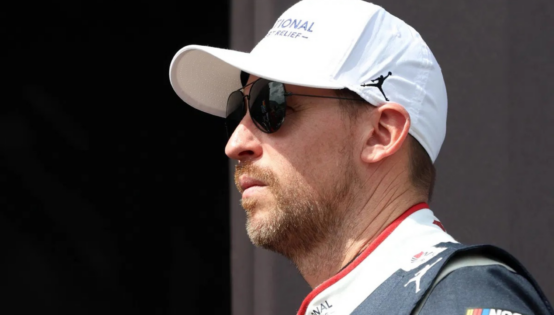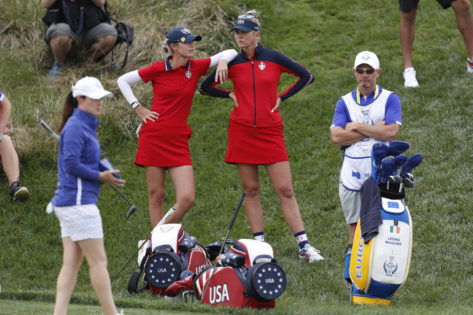In a sport where the line between glory and grave can be thinner than a sheet of paper, one tragedy struck boxing not too long ago. When Bill Haney, father and coach to the former undisputed lightweight champion Devin Haney, reshared a disturbing Instagram post showing the in-ring death of a Nigerian boxer, it wasn’t just another grim highlight. It was a pointed wake-up call to the entire combat sports world.
The original reel, posted by verified Instagram user @morextiandela, highlights the horrifying moment when Nigerian boxer Gabriel Oluwasegun Olanrewaju collapsed in a match against Ghana’s John Mbanugu. The bout took place at Bukom Boxing Arena in Accra during Ghana’s Professional Boxing League Fight Night 15 on March 29, 2025. Though the tragic death of the 40-year-old Nigerian boxer occurred a few months ago, the terrifying reminder that the recent Instagram post carried with it clearly shook Bill Haney.
The post’s original creator, Xtian Dela, captioned the reel somberly: “Nigerian Boxer Gabriel Oluwasegun Dies in Ghana Seizure.” According to the full post shared in late March by Dela, Gabriel Oluwasegun Olanrewaju, 40 years old with 23 professional fights under his belt, had collapsed in the ring mid-fight. He was then rushed to Accra’s Korle-Bu Teaching Hospital. Despite medical efforts, he was pronounced dead shortly after arrival. Ghana’s Boxing Authority confirmed his death and reiterated that 1 in 10 boxers globally suffer severe health risks due to fights. This is what Devin Haney’s father pointed out too. “Most dangerous sport in the world,” the caption on Bill Haney’s Instagram story read, before citing boxing’s jaw-dropping toll: ‘over 400 deaths since 1993’, compared to “MMA: fewer than 10.”
That fight night on March 29 wasn’t just another boxing match that went wrong—it was a career, a life, and a dream extinguished. Born in December 1984 and raised in the densely populated slums of Ajegunle, Lagos, Gabriel took up boxing at 14 to escape poverty. By 2015, he was crowned National and West African light-heavyweight champion. Known in Lagos’s boxing alleys for his iron will and thunderous left hook, he trained kids for free in his later years, mentoring over 50 youths at his local gym. “Give them the future I fought for,” he often said in church, where he sang gospel. His death sent shockwaves through Nigeria’s 220 million citizens and Ghana’s 31 million. As the Instagram post chillingly noted, Gabriel’s was the third in-ring death in Ghana since 2020.
Though the accuracy of the numbers highlighted in the post is difficult to ascertain, the 2009 report from the American Medical Association that estimated 0.13 deaths per 1,000 participants in boxing annually doesn’t paint a picture too far from the one cited in the post. With the MMA having only 10 fatalities since 1993, it further shows how dangerous boxing is compared to other combat sports.
In a world where fighters lace up gloves not just for titles, but for survival, Gabriel’s story reminds us of the brutal cost. And Bill Haney’s conclusion, though wordless, was painfully clear: the ring isn’t just a stage—it’s a battlefield.
Some of the most shocking in-ring deaths in boxing history
Boxing is often called the sweet science, but its beauty can quickly turn brutal. With an average of 13 athletes losing their lives each year inside the ring, this unforgiving sport continues to walk the razor’s edge between triumph and tragedy. While many bouts end with a raised hand and roaring applause, others conclude in chilling silence. Over the decades, a handful of incidents have stunned the world, not just because of the death itself, but because of the heartbreaking circumstances around it.
Take, for instance, South Korea’s Kim Duk-koo. In November 1982, he faced the formidable Ray Mancini in a battle that would alter boxing forever. After an exhausting 13 rounds, Mancini secured a TKO in the 14th. But minutes later, Duk-koo collapsed, never to wake again. “His death changed everything,” sportswriter Steve Farhood once noted, referring to the ripple effects that followed: the introduction of the standing eight count, stricter medical screenings, and longer suspensions for knocked-out fighters. More importantly, it forced sanctioning bodies to do away with 15-round fights and instead change it to a maximum of 12 rounds, a norm still in effect to this day. Tragically, his mother and the referee who officiated the fight also took their own lives within a year—proof that trauma can reach far beyond the ropes.
Then came Russia’s Maxim Dadashev, known as “Mad Max.” In 2019, he was on the cusp of a world title shot in an IBF eliminator against Subriel Matias. Despite a valiant effort, his corner—led by renowned trainer Buddy McGirt—called the fight after the 11th round. Dadashev, disoriented and defiant, initially protested. But it was already too late. He collapsed shortly after leaving the ring and died days later from a subdural hematoma. “I couldn’t let him take any more,” McGirt said tearfully, reinforcing the brutal reality that even those tasked with protecting fighters sometimes arrive a moment too late.
Not all tragedies come with the fanfare of title fights. In a little-known bout in Albania, Bulgarian boxer Boris Stanchov died while competing under his cousin’s identity—Isus Velichkov—to protect his record. The deception turned horrific when Stanchov collapsed and never got back up. His death, equal parts bizarre and heartbreaking, exposed a darker corner of the boxing world, where desperation can override caution.
And then there’s Patrick Day, whose promising career was cut short in 2019 after a brutal knockout loss to Charles Conwell. Conwell’s celebration quickly turned into visible panic. Day never regained consciousness and died four days later. Conwell, still unbeaten, continues to dedicate each fight to his fallen opponent. “I never meant for this to happen,” he wrote in a heartfelt open letter, capturing the helpless grief that can follow even a sanctioned, legal victory.
These stories are just a few among many, yet they serve as stark reminders that in boxing, bravery can come at the ultimate cost. The cheers may fade, but the echoes of these fighters’ final rounds linger on.
The post Over 400 Boxing Tragedies Later, Bill Haney Comes to a Chilling Conclusion appeared first on EssentiallySports.



